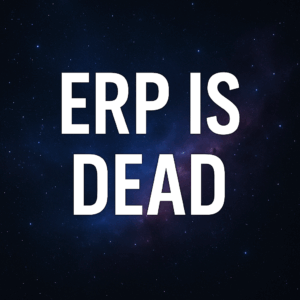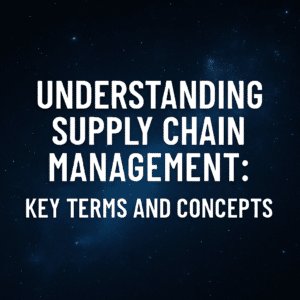When embarking on a digital transformation, organizational change often comes with a common set of recurring pain points along the way. So, what are those pain points and how can they be avoided during a digital transformation?
Oftentimes, it’s going a layer deeper than what some of the expected business benefits and improvements might be, but rather what are the organizational headwinds and pain points that organizations experience as they’re going through transformations.
These are things that need to be looked at not only in terms of understanding some of the difficulties, challenges, and pitfalls of digital transformation but also in terms of understanding what the change management strategy and tactics might be to help address some of those pain points along the way.
Table of Contents
ToggleTribal Knowledge
When organizations are looking to automate business operations as part of a digital transformation, they often face this phenomenon where they’ve relied on tribal knowledge due to a lack of automation. Employees within the organization have a lot of stuff rattling around their heads, there’s a lot of knowledge that they themselves have individually that’s not documented or captured anywhere, which in turn, becomes dependent on that tribal knowledge.
One of the biggest obstacles in organizational change pain points that are common is the fact it is tribal knowledge. There are two reasons why this is being pointed out. One is because it creates headwinds and difficulty in going through the transformation because now, it turns to the people’s side of things of extracting that knowledge and getting it out of their heads because it’s not documented anywhere. The problem with that becomes something that can add to the duration of the project.
The second reason tribal knowledge is such a pain point is that it creates resistance to change. If an employee relies on that knowledge, and there is pride in having that tribal knowledge and being one of the only people, inherently there is going to be resistance in any efforts to mitigate or neutralize the benefit or the advantage that is brought to the organization.
On the surface, most if not all organizational change management issues need to be addressed to move forward in a digital transformation. In the end, it’s important to stay vigilant of the fact that tribal knowledge is something that could be an organizational pain point needing high priority along the way.

Inefficient Business Processes
One of the other pain points that organizations are trying to face oftentimes as part of their digital transformation is inefficient business processes. These are highly manual, redundant, and require rework or double entry of data during the overall business processes. This is something that can be difficult to change because even though it may be painful and inefficient, it’s the way things are. A lot of times it’s often baked deep within the organization and the operational model that is being worked on.
It is imperative to note that the automation of these business processes is like the last point about tribal knowledge. It can create a culture of heroics when there are inefficient processes because they are broken processes, and when that happens, that means there are broken systems.
Collaboration and Innovation
Typically, when there are inefficient business processes, they are siloed business processes. In other words, there are two different parts of the organization that are operating in their own silos and operating in their own world without an understanding or regard for what’s happening throughout the rest of the organization. Part of this is because of growth. It is essentially part of larger organizations and broken-down integrated systems.
It’s not that anyone intended for that to be the case, but that often is the case as organizations grow and mature. Digital transformation enables the integration of business processes and enables a way to collaborate and have better visibility into the entire organization. It is critical to define business processes in a way that enables integration and innovation among different parts of the organization and the operations.
People inside of the organization need to understand what those roles and responsibilities might be. In the end, these are great ways to overcome some of those challenges that come along with the lack of innovation, integration of business processes, and collaboration among the organization.
Dirty Data
Another common pain point that organizations face is dirty data. They have data that needs to be cleansed or just doesn’t exist. It’s located in multiple locations or some combination of all the above and the reason this is a pain point organizationally is that now everyone is forced to uncover and capture integrated data and clean data in a way that allows a more successful digital transformation.
When the thought of digital transformation comes up, it’s only as good as the data that is placed into that technology. Deploying new technologies that can support better predictive analytics, machine learning, artificial intelligence, and business intelligence, is only going to work if the good data is captured and brought over into the new systems. Most organizations though grew up in a world or in a space where they didn’t have clean data and therefore, it needs to be cleaned up.
The organization needs to integrate it and they need to go to all the different sources of data to bring it all together and support the new digital transformation process. This is something that can create significant organizational and implementation headwinds while looking at it from the perspective of a project management initiative.

Technical Debt
Another organizational challenge that companies face during digital transformation is this concept of technical debt. This term essentially means organizations that are behind in technology investments, haven’t changed the technologies over years or decades, and now are playing catch up and repaying that debt to get caught up and brought into the modern age of technology. This is a big organizational change and organizational cultural shift once the organization goes with this change.
The problem with waiting so long to upgrade technology can create pain along the way. It is not because people don’t realize how technology can help enable the business longer-term, its simply it’s a big change for people that are so used to one thing. That alone is enough to create resistance to change, and it’s enough to make change management more difficult than it typically would be. With that, technical debt is another pain point to be aware of while going through digital transformation.
Lack of Process Maturity
The final pain point that I’ll mention as it relates to digital transformation in the organizational dynamics is the fact that there is a lack of process maturity in the business process and operating model. Most organizations to be fair, have an immature business process model. Many of them don’t have business processes well defined or documented and if they do, it’s at a very high level that lacks meaningful detail and is broken.
When the organization realizes this stage, they should make it a priority to improve because if they don’t, the process maturity or lack thereof can create challenges from an organizational perspective. if the processes aren’t mature today, the organization will always be playing catchup. Process maturity is something to be aware of and the bigger the leap between the current processes and future state processes, the longer it’s going to take to deploy the new technology.
In theory, it May take 12 months to deploy new technologies for the organization, but when the factor or the variable of having immature business processes is thrown in, the time may extend to 18 to 24 months, simply because the organization is embarking on a bigger change and that’s going to take more time.
Resources
I hope this has helped put the organizational change pain points into perspective. These are just a few tips to keep in mind as you begin to implement new technology into the organization. I encourage you to download our Guide to Organizational Change Management This is something that’s very important if you’re a change practitioner, or if you’re trying to understand the people side of change and some of the nuances and things to think about.
Please also download our 2021 Digital Transformation Report which provides best practices for how to deploy technology, including organizational change. If you have any questions regarding these pain points or the best technology to use on the market today, please don’t hesitate to reach out to me directly. I am happy to be an informal sounding board as you move through your digital transformation journey.






